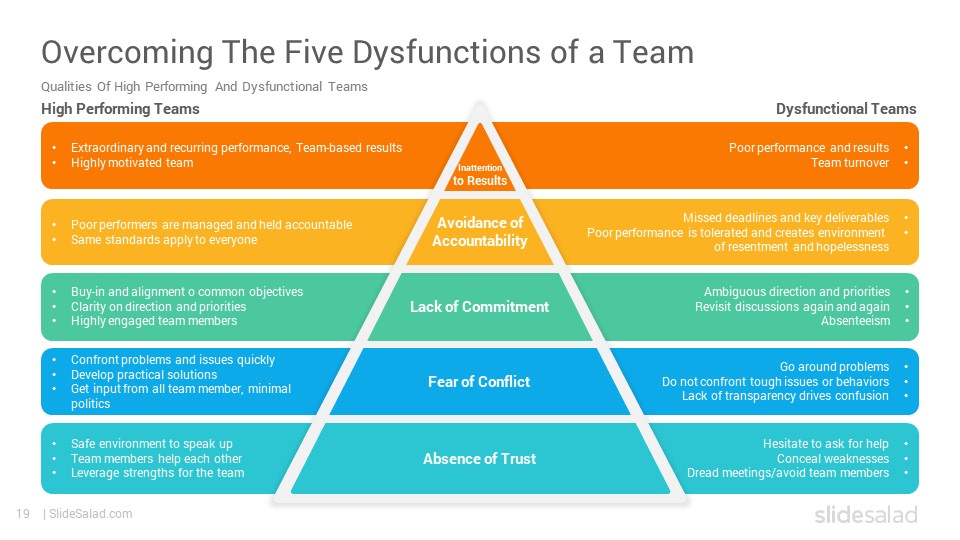
This “fear” is an unwillingness to engage in productive, unfiltered debate that ultimately leads to discomfort, stress, and growth. Lencioni states that a “fear of conflict” is the second dysfunction that prevents teams from reaching their true potential. While I previously wrote about how trust is the foundation of both Lencioni’s pyramid and any team, in this post, I’ll define the next two levels of Patrick Lencioni’s team pyramid (conflict and commitment) and discuss ways to promote them so that you can achieve more. In the book, Patrick describes the 5 dysfunctions of a team and uses a pyramid to show the levels: In my last post, I wrote on Patrick Lencioni’s ‘The Five Dysfunctions of a Team,’ widely considered one of the best books on team-building. In fact, I believe conflict is essential in order to truly commit to something, a concept which I’ll refer to-from here on out-as ‘true commitment’. I’d argue (and I’m about to) that it’s the conflict related to them that makes them more likely to be met.


Whatever the reason seems to be on the surface, when I look deeper, the commitments I meet just about always involve some dialog and conflict. Why? What was different with these? Maybe it was a hard deadline, the fact that someone else was counting on it, or I felt a deeper sense of obligation. I imagine my list is similar to yours.Īs part of my reflection, I also look at the commitments I met. After I break a commitment, I typically take a few minutes to reflect as to why I didn’t follow through and find the usual excuses – over-committing, failing to prioritize my time effectively, becoming distracted by urgent but relatively unimportant tasks, etc.


 0 kommentar(er)
0 kommentar(er)
